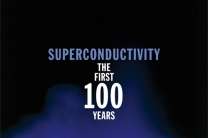Power cables light the future path of superconductivity

One hundred years ago this month, superconductivity was discovered in the lab of Dutch physicist Heike Kamerlingh Onnes. Since then many more materials have shown to be superconducting, providing new applications and creating a new realm of physics.
In honour of this discovery, the April issue of Physics World is dedicated to the discovery and features a run-down of the top five applications of superconductivity, written by Paul Michael Grant from W2AGZ Technologies, San Jose, California.
Topping Grant’s list are superconducting wires, and in particular a high-temperature tape made from yttrium-barium-copper-oxide (YBCO). YBCO, which superconducts when cooled with liquid nitrogen, has some remarkable properties - despite being hard and brittle, it can be made into batches thousands of metres long.
YBCO could be used for superconducting power cables, carrying electricity without any power loss, which is a big problem for conventional copper cables. The US Department of Energy has in fact just completed a 20-year programme in this field and as Grant writes: “Its fruits are now on the shelf, waiting to be harvested by the utility industry and its suppliers.”
In second place, Grant highlights the application of superconductivity to medical imaging, where superconducting magnets are essential components of Magnetic Resonance Imaging (MRI) scanners. He also highlights a technique that uses superconducting quantum interference devices (SQUIDs) to detect the tiny magnetic fields generated by the very small currents in the heart and brain.
Third place is taken up by the application of superconductivity to high-energy physics, more specifically in the magnets that bend protons around at particle accelerators like the Large Hadron Collider (LHC) at CERN.
Grant’s penultimate application of superconductivity is its ability to produce lighter, smaller and more efficient generators by allowing the required iron core of electromagnets to be removed.
Finally, Grant sheds light on how superconductivity can aid the search for dark matter, which, if discovered, could lead a budding researcher to a Nobel Prize for Physics.
One notable omission from the list is magnetically levitated (maglev) trains. These trains, which are suspended and guided above a track by a large number of magnets, have captured the imagination of the public and could hold the key to faster, quieter, and smoother transport in the future.
As of yet, however, every maglev train that has ever been built, barring a train used on a test line in Japan, has used conventional, albeit powerful, iron-core electromagnets.
Provided by Institute of Physics












.jpg)





